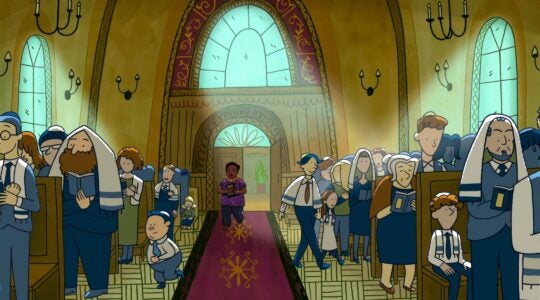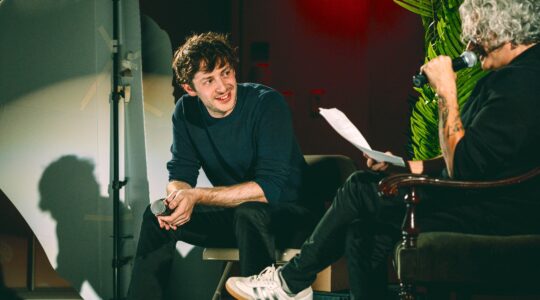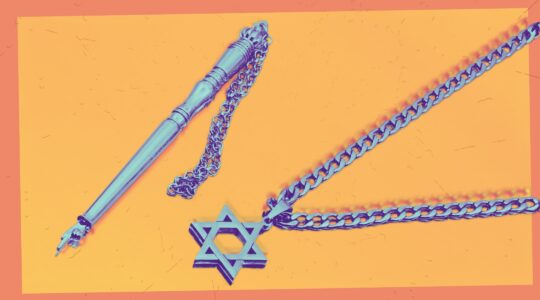Thirty five years ago this week, I ascended the bima at Congregation Emanuel of the City of New York, and Rabbi Alfred Gottschalk, of blessed memory, placed his hands on my head and ordained me as a rabbi.
When I think back on that moment, I think of how much has changed in my life – how the rabbinate itself has changed — and how much has remarkably stayed the same.
People ask me: “Why did you decide to become a rabbi?” Are people as curious about other professional choices: “Why did you become a lawyer, or a doctor, or an engineer?” Did I somewhere in the midst of Long Island, encounter a burning bush?
The truth: When I entered rabbinical school, I had a very small idea of what Judaism really was. That is why I have dedicated my career to ensuring that my students would not enter the Jewish world with an understanding of Judaism that was as thin as I had.
True, I grew up in an active Jewish home. Israel was important to us. The memory of the Shoah was crucial to us.
True, I had attended Camp Eisner in Great Barrington, Massachusetts, one of the jewels of Reform Judaism’s camping program.
I had been active in the Reform youth movement.
I had helped found the Jewish students organization at SUNY Purchase.
I entered adolescence with the Six Day War. I entered college with the Yom Kippur War. I entered rabbinical school with the rise of Palestinian terrorism.
Moreover, I was active in the Soviet Jewry movement – that international drive to free Jews from their Soviet prison. It was the most successful human rights movement of the century.
I wanted to heal the wounds of my people, to fight anti-Semitism, and to defend the state of Israel. I attended rallies. I sang: Am Yisrael chai – the people of Israel lives.
But there was a second line to that song: Od avinu chai. Our “Father God” still lives. And that was new to me.
Therefore, I credit Hebrew Union College-Jewish Institute of Religion with teaching me Judaism — text-based, God-intoxicated Judaism.
There were three teachers who changed my life.
Lawrence Hoffman teaches liturgy at HUC-JIR. In fact, he invented the study and teaching of Jewish liturgy for the contemporary liberal Jew.
Hoffman understood that that we cannot view prayers as mere texts. He knew that they are linked to the way that they were prayed, the rituals that accompanied them, and what those rituals have meant to the Jewish people.
Hoffman was the first Jewish teacher to view worship holistically. It wasn’t just the words. It was about the music and the prayer spaces, and even the aesthetics of the prayer book. He brought architecture, anthropology, psychology and sociology into this work. Larry Hoffman became one of the most creative and crucial thinkers in the Jewish world.
Lawrence Hoffman taught me how Jews pray.
Norman Cohen teaches midrash at HUC-JIR, and has served as its provost as well. Norman Cohen opened up for me the world of midrash – the rabbinic comments on the biblical text, the legends that the sages wove about biblical characters and stories, how readers of the text filled the white spaces between the black letters of the scroll.
Before studying with Professor Cohen, I had no idea how rich a Jewish text could be; how many levels of meaning there could be, or that you could dig through a biblical text as through an ancient archeological tel.
Norman Cohen got me interested in the minor characters of the Torah. He introduced me to, Dinah, the daughter of Leah and Jacob. I did my thesis on how she appears in the midrash. I have not given up on her. I have continued to study her.
Norman Cohen taught me how Jews read.
The third major influence was the man who shaped my Jewish perceptions of the world, and a man whom the Jewish world lost this past year.
I am referring to the late Eugene B. Borowitz, who taught Reform Jews — and their teachers — for more than 60 years. He was the dean of contemporary Jewish religious thinkers; in fact, he invented the study of modern Jewish theology.
I was not only his student in the classroom. I was the assistant editor on the Jewish intellectual journal that he founded, Sh’ma. He was the founding rabbi of The Community Synagogue in Port Washington, NY, and when I served as the rabbi there, I had the blessing to be his rabbi.
Borowitz was the most influential thinker in Reform Judaism. Borowitz taught that Reform Judaism places primary consideration on the autonomy of the individual – in particular, to depart from more traditional understandings of Jewish law.
That didn’t mean: “Do what you want.” Not at all – for he taught that the Jewish self lives in relationship with the people of Israel, and with the God of Israel.
Eugene Borowitz taught me how Jews think.
But, what should rabbis do?
This is how the students of the chasidic teacher, the Maggid of Mezrich, described him.
"He pushed us and pulled us. He asked us questions, and listened to us. He listened as each one of us told him his or her own story about what it was like to go out of Egypt. And he listened while each one of us told him his or her own story of what it was like to stand at Mt. Sinai and accept the Torah."
I inherited that job description from my teachers. To push and pull. To ask questions. To listen. And to get people to understand their own role in Jewish history.
Jeffrey K. Salkin is the senior rabbi of Temple Solel in Hollywood, Florida, and the author of numerous books on Jewish living, published by Jewish Lights Publishing and Jewish Publication Society. His blog, Martini Judaism, is “for those who want to be shaken and stirred” (jeffreysalkin.religionnews.com).
The New York Jewish Week brings you the stories behind the headlines, keeping you connected to Jewish life in New York. Help sustain the reporting you trust by donating today.




